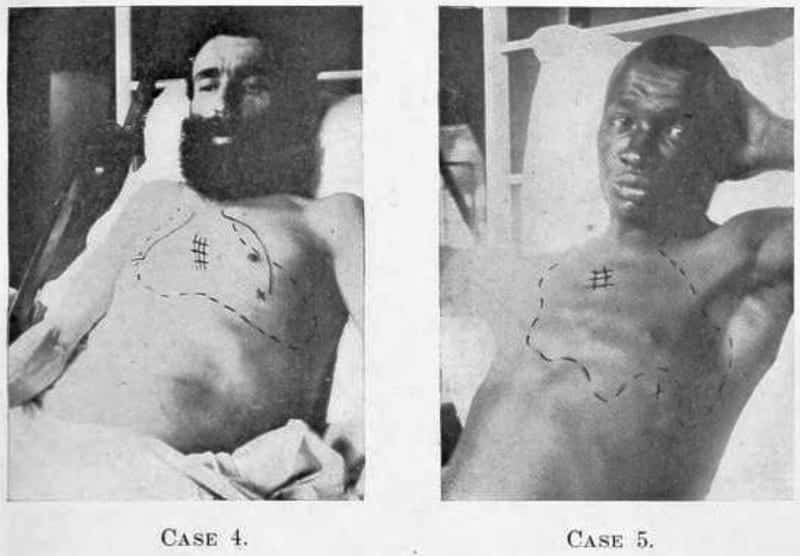Cole-Cecil murmur
Description
Early diastolic murmur of aortic insufficiency with axillary radiation.
History of the Cole-Cecil murmur
1908 – Cole and Cecil examined 17 patients with provisional diagnosis of aortic insufficiency and mapped the site of maximal intensity and axillary radiation of the early diastolic murmur.
Having our attention drawn to the localization of an aortic diastolic murmur in the axilla we began to pay special attention to the occurrence of this murmur, and decided to make an accurate study of the distribution of the diastolic murmur in a number of cases of aortic insufficiency.
The method of study has been to place the patient in an upright position…The area of deep cardiac dullness outlined by percussion, and the boundaries marked with a pencil on the chest wall. The area over which the aortic diastolic murmur has been heard with greatest intensity has been indicated by cross lines, and the area over which it is transmitted have been indicated by dotted lines.
Photographs were then taken. We have found diagrams very unsatisfactory for such purposes, as chest walls differ so much in size and shape, and diagrams and measurements alone give a very imperfect idea of the conditions present.
Cole and Cecil 1908
In eleven of the cases there was a rumbling presystolic murmur heard at the apex. In two a definite diagnosis of mitral stenosis could be made, and in five others the physical signs, history and general features rendered it probable that a true mitral stenosis was present, though in most of them the possibility that the murmur was only a Flint murmur could not be excluded. In four the presystolic rumbling murmur seemed to be quite definitely that described by Flint. In six, however, there was no suggestion of a rumbling presystolic murmur at the apex, but, nevertheless, the blowing aortic diastolic murmur was heard at and outside this point.
We foresee that the chief objection that will be raised to our description of the axillary aortic diastolic murmur will be that we have been listening to the diastolic mitral murmur (either a true stenotic murmur or a Flint murmur) which is transmitted into the axilla. We feel convinced, however, that such objections are not valid. The fact that the murmur described has been of exactly the same kind and quality as that heard at the base makes it seem almost certain that both have an identical origin.
Cole and Cecil 1908
Associated Persons
- Rufus Cole (1872-1966)
- Arthur Bond Cecil (1885-1967)
- Austin Flint (1812-1886) and the Austin Flint murmur (1862)
Alternative names
- Axillary early diastolic murmur of aortic insufficiency
Controversies
Note: Original paper from 1908 and not 1936; and the cause of aortic insufficiency in the 17 cases included rheumatic fever, alcoholism, and syphillis and thoracic aortic aneurysm and not simply syphilitic aortitis as widely quoted
References
- Cole R, Cecil AB. The Axillary Diastolic Murmur in Aortic Insufficiency. Johns Hopkins Hospital Bulletin. 1908; 19: 353-361
- Zhang G. Eponyms in Aortic Regurgitation. LITFL 2019
- Robbins A, Zhang G, Cadogan M. Name that murmur. LITFL 2022
[cite]
eponymictionary
the names behind the name


